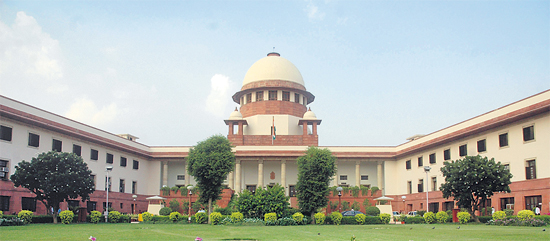Live Classes

The agency is entering new areas of surveillance.
Last week, the Enforcement Directorate (ED), the 66-year-old agency that puts into operation the Foreign Exchange Management Act (Fema) and Prevention of Money Laundering Act (PMLA), saw an exponential expansion of its powers under the PMLA.
Expanding Information Sharing
The Centre has amended a 2006 notification to include 15 organisations on the list of institutions with which the ED may share information regarding cases. Among these are the National Investigation Agency (NIA), the Competition Commission of India (CCI), the Serious Fraud Investigation Office (SFIO), and State Police Divisions. This expands substantially the ambit of the ED’s information-sharing brief, which was previously limited to such bodies as the Central Bureau of Investigation’s economic offences wing, the banking and stock market regulators, the Research and Analysis Wing of the Cabinet Secretariat, and the Intelligence Bureau, apart from the chief secretaries in states.
Why the question mark on the new list included in ED?
With the latest list, several questions arise. First, some of the institutions that have been included point to an impressive expansion of the ED’s sectoral expertise — the Bureau of Wildlife Crime Control, for example.
Second, if organisations such as the SFIO, Central Vigilance Commission, and NIA are required to share data, it leaves open the question of the enforcement functions of these agencies.
Third and most problematic is the inclusion of the CCI within the ED’s information-sharing ambit. This has significant consequences for the corporate sector since it lays open to agency scrutiny confidential data that companies submit to the competition regulator. This is hardly likely to add to corporations’ confidence in a key institution that governs mergers and acquisitions and, at the very least, will seriously discourage consolidation and buyouts by foreign corporations.
Supreme Court Judgment and Enforcement Directorate
It is significant that this expansion of the ED’s ambit comes just four months after a Supreme Court ruling that upheld the agency’s powers of arrest, property attachment, and search and seizure with relative impunity. The court went a step further and said the ED was not bound to produce the Enforcement Case Information Report, the official document recorded before starting a criminal investigation, to the person concerned.
It was enough, the court observed, if theED disclosed the grounds for arrest when it is done, which is surely an inversion of the basic principles of criminal justice. It is no surprise that, just a month later, the court agreed to list the verdict for review. Of late, the ED has reportedly forged ahead demanding a three-fold rise in staffing plus offices in every state capital.
Why is this necessary?
The grounds for doing so were the notable expansion in its money-laundering case load. Between 2019-20 and 2021-22 — just two years that covered the pandemic — the agency handled 2,723 cases, up from 1,262 in the seven years from 2012-13 to 2018-19.
Why is it being criticized?
Critics have taken this as evidence of the weaponisation of the ED in the light of the notable increase in cases against Opposition leaders and critics of the state (the CBI has been similarly requisitioned). The latest expansion of information sharing suggests that the government is also expanding its surveillance powers to larger swathes of society. An expanding surveillance state is usually a sign of shrinking democracy. This history should not be repeated in India.
GS PAPER - 2 (Internal Securtiy)
Download pdf to Read More